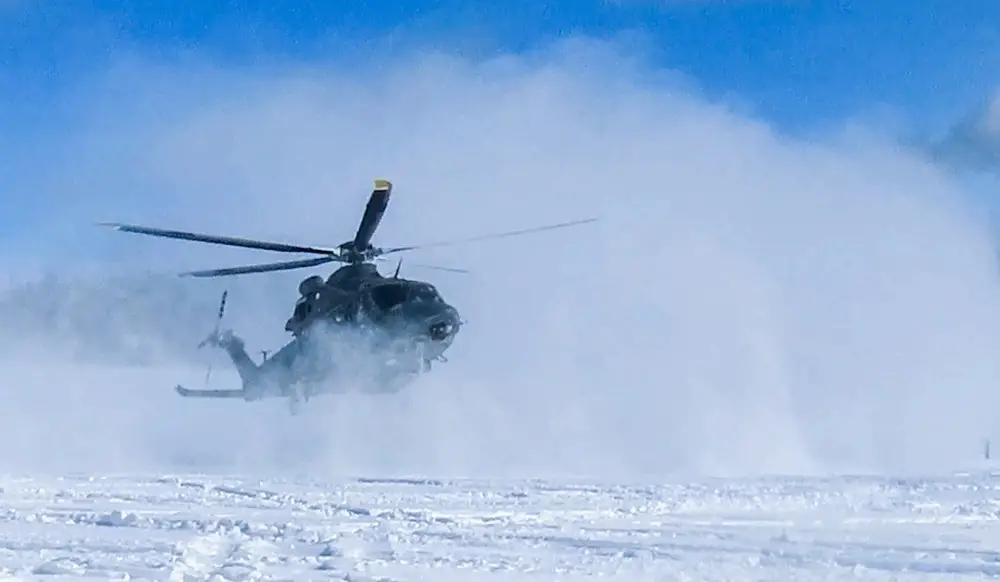The U.S. Air Force MH-139A Grey Wolf stood out against the austere landscape of evergreen trees and snow. As it moved toward the ground, the five-rotor downwash created a white cloud of snow that enveloped the aircraft and the aircrew inside. Upon touchdown, the horizon was barely visible through the snow cloud. This landing was the culmination of the 413th Flight Test Squadron’s austere landing testing at Malmstrom AFB, Montana, this year, during the month of February. The testing was supported by Air Force Global Strike Command’s Detachment 7. The 413th FLTS tested the MH-139A’s ability to land in unprepared areas such as fields, a core capability of any rotary-wing aircraft.
“Snow is a naturally unstable surface, and you don’t always know what is underneath it. In deep snow, you’re never fully on the ground like you would be on other surfaces, you need to be prepared for the surface to shift. It just means you land a little more carefully and respect the potential of the surface to change,” said Palka, who piloted some of the snow missions.
“Since you can land to nearly any surface, you have to be prepared for potential ground obstacles as well as any variations in the surface, such as slopes. The landing surface is evaluated from the air and the approach is typically flown more carefully than it would be to a controlled, paved surface such as a runway,” said Maj. Jonathan Palka, 413th FLTS test pilot.

After the Duke Field tests, the 413th Flight Test Squadron and Global Strike Command’s Detachment 7 aircrew took the Grey Wolf north to mountains over 9,000 feet with single-digit temperatures. Since the aircraft will eventually be stationed in Northern-tier bases, the Grey Wolf’s stakeholders were interested in testing its capabilities in cold weather and snow conditions that it will be operating in 4-6 months each year. Aircrew filmed the landings using helmet-mounted cameras as well as from cameras on the ground. Through both tests, the squadron learned more about the aircraft and provided data back to their customers and safely brought the aircraft home ahead of schedule.
The Boeing MH-139A Grey Wolf is a multi-mission helicopter – based on the proven commercial AW139 helicopter – designed to protect intercontinental ballistic missiles and transport U.S. government officials and security forces. The MH-139A is set to replace the Air Force’s aging UH-1N Huey fleet. The new helicopter closes the capability gaps of the UH-1N in the areas of speed, range, endurance, payload and survivability in support of the Air Force Global Strike Command’s ICBM missions. Produced in the United States, the MH-139A provides an off-the-shelf, readily available solution combining performance, operational flexibility and safety. The Boeing MH-139A will deliver unrivaled affordability, supportability and reliability for substantial life cycle savings.













